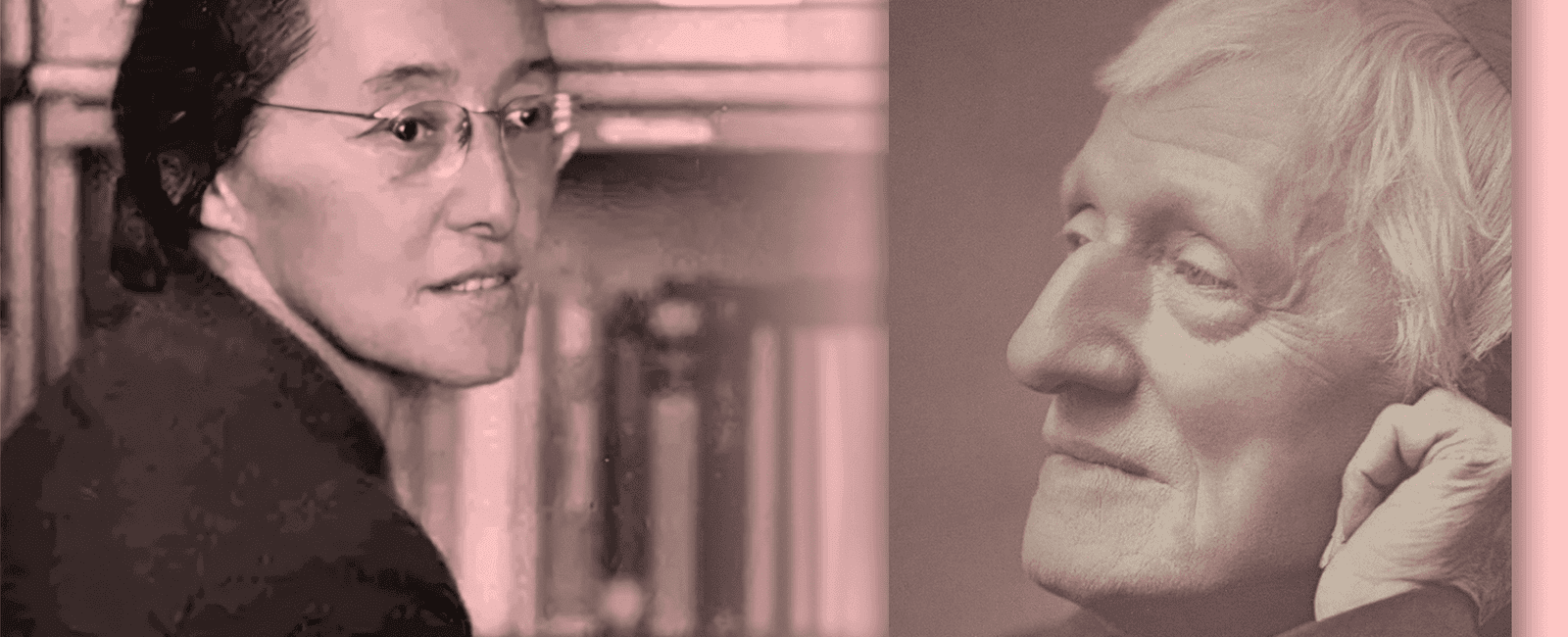Newman and the Work of Ida Friederike Görres

In Munich in the 1990s, a previously unknown manuscript of an unpublished book about John Henry Newman written fifty years earlier surfaced. It was subsequently published in German (Der Geopferte, 2004) and has now been translated into English as John Henry Newman: A Life Sacrificed (Ignatius Press, 2024). The author was Ida Friederike Görres (1901–1971), a once-famous Catholic author known especially for her hagiography.
Born in Bohemia in 1901 as Friederike Maria Anna von Coudenhove-Kalergi, her father had been a diplomat in the Habsburg Empire, and her mother was a Japanese woman whom he met while stationed in Tokyo. Though Görres was baptized and raised Catholic, it was not until a conversion experience as a teenager that she discovered the profoundness of faith. While attending a Catholic boarding school for girls in Austria, the soul of Ida Friederike Coudenhove, as she was then known, was lit on fire with the faith that became the center of her life from then on, and this faith led her to devote her literary talents to Catholic topics for the rest of her life.

Her skill in poetry, fiction, and prose was clear from a young age. Her first publication, in 1919, was a play based on the Song of Songs. Around this time, she also encountered the budding Catholic Youth Movement, which played a vital role in her own life, as well as in revitalizing segments of the Catholic Church in Austria and especially in Germany until Nazi opposition in the 1930s crushed the movement.
In the 1920s, she spent two years in the novitiate of the Mary Ward sisters in Austria. After discerning this was, however, not her vocation, she spent the following years in the Catholic Youth Movement, mostly in its Quickborn branch in Burg Rothenfels, led by Romano Guardini. She edited and wrote for the Movement’s journals (for a sample of her essays, see her review from 1930 of Sigrid Undset’s novel The Wild Orchid). She published another play in the 1920s—this time about Savonarola—and prominent figures in the Catholic Youth Movement performed it in Vienna. She led ministries of the Movement for girls and young women. Also, she studied in Vienna and Freiburg.
In the early 1930s, she published a trilogy of books on aspects of the Catholic faith. These were promptly translated into English and published by Sheed & Ward. From the start, key Catholic figures such as Christopher Dawson and T. F. Burns recognized her talent, not least of all her insights in hagiography. In 1932, they included her book The Nature of Sanctity in their series Essays on Religion and Culture. Also in the early 1930s, while continuing to write, she led ministry for girls and young women for the Diocese of Meissen.
In 1935, after a bishop released her from her vow as a consecrated virgin, she married and subsequently published under her married name Görres. From 1935 to 1937, she published three collections of short stories to provide girls and young ladies with healthy female role models in juxtaposition to the new Nazi image of “womanhood” the government was pushing.
In 1946, she ran into controversy with a “Letter on the Church” expressing concern about the weakness of belief and other challenges in the Church in Germany. Her book in 1950, which I recently translated into English as The Church on the Flesh, is a response to that controversy.

The Church in the Flesh reaches its crescendo in the final chapter, “Church of the Saints,” which offers a precis of her life’s work on the nature and centrality of sanctity. This chapter has stood out to readers. In a review, Fr. Ephrem Reese, O.P., wrote, “This letter dwarfs the other five in quality, offering a personal justification of her life’s work but also a zealous creed about being human.” A friend wrote to me, “[I] read the sixth letter today on saints and the Church, and this letter alone is worth the price of the book.”
Alongside hagiography, imparting the Catholic teachings on sex, man/woman, and marriage was an important theme of her work. In the later decades of her life, alongside writing about additional saints, she addressed topics such as conscience and bioethics, and she took the rise of the sexual revolution head-on. She gave presentations to young women on marriage (the resulting book is forthcoming in English); she described Simone de Beauvoir’s notion of “woman” as “satanic”; she defended priestly celibacy (see, e.g., Is Celibacy Outdated?); she opposed women’s ordination; she praised Humanae vitae; and at the end of her life, she wrote an impassioned defense of the indissolubility of marriage (my translation is forthcoming in English from CUA Press in 2025).
While she herself, inspired by the idealism of the Catholic Youth Movement, was no stick-in-the-mud anti-change Catholic, nevertheless, in the 1960s, she became increasingly alarmed by the rise of progressivism in the Church. Though she was not entirely surprised. In the book she wrote on Newman in the 1940s, she expresses her concern about the early seeds of this progressivism starting to sprout inside the Church (see Ch. 2, “The Golden Apple”). By the mid- to late-1960s, she was ringing alarm bells ever more loudly. This continued until the end of her life. For example, in 1969, she published an essay critical of reforms underway, titled, “Demolition Crews in the Church.”
On May 14th, 1971, after delivering an impassioned speech at the Synod of Wurzburg, to which she was a delegate, she collapsed and died the next day from a brain hemorrhage at a hospital in Frankfurt. Father Joseph Ratzinger (later Pope Benedict XVI) gave the eulogy at her funeral.
Ida Görres was a highly learned woman. Her friends and those with whom she corresponded generally had strong intellectual leanings. These included Hans Urs von Balthasar, Werner Bergengruen, Paulus Gordan, OSB, C. S. Lewis, Brigitta zu Münster, OSB, Walter Nigg, Joseph Ratzinger, Alfons Rosenberg, and Gustav Siewert. The heart of her work, however, was not academic. Instead, she wanted to wake Catholics out of mediocre spiritual lives to faith on fire. She considered the pursuit of sanctity man’s highest calling and the key to unlocking the question, “What is a human being?”

Sanctity and the saints were central to her work. Her lives of the saints as well as shorter works on them and the nature of sanctity were among her greatest works. She wrote about St. Elizabeth of Hungary, Ven. Mary Ward, St. Radegund, St. Henry Suso, St. Thérèse of Lisieux, St. John Henry Newman, St. Francis, St. Joseph, St. Stephen, and St. Hedwig of Silesia, among others. Even her fiction guides readers through the lives of the saints: St. Veronica, St. Chirstopher, St. Alexius of Rome, and more. For Ida Görres, no “progress” could erase their relevance.
Today, there is renewed interest in the work of Görres. Occasionally her works come back into print and there are some new translations underway. It is fitting that Newman is part of this return today of her pen to the printing presses, with the posthumous publication of her book about him in 2004 and an English translation of it in 2024: John Henry Newman: A Life Sacrificed (Ignatius Press, 2024).
It seems her favorite saint was St. Michael the Archangel, whose image she had engraved on her tombstone. Yet, if I had to guess who her favorite human saint was, I think the evidence points to St. John Henry Newman. There is no other whom she quotes as frequently as she does Newman. (See, for example, Broken Lights: Diaries and Letters, 1951–1959 and The Church in the Flesh, both of which contain many references to and quotations by him.) Görres also had a special reverence and respect for him. She dubbed Newman the “Church Father of the Twentieth Century.” And over seventy years before his canonization, she wrote, “It is not unlikely that John Henry Newman will one day be elevated to the honor of the altars.”
Share
Jennifer S. Bryson
Jennifer S. Bryson, PhD, is a Fellow in the Catholic Women’s Forum of the Ethics and Public Policy Center in Washington, DC.
Topics
Newsletter
QUICK LINKS

